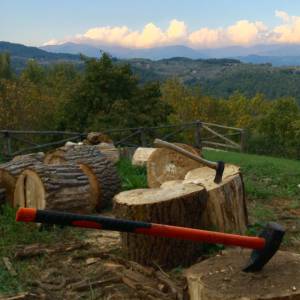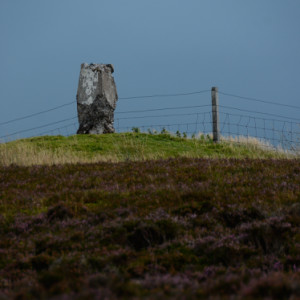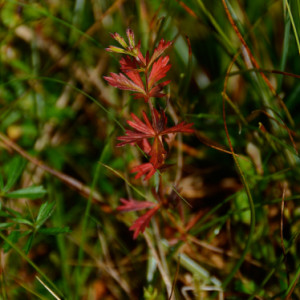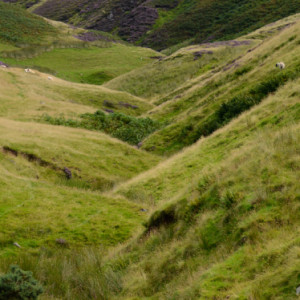Groundhog Day
After being really thoroughly out of sorts by the ere latening evening yesterday I decided on a plan this morning. To re-do the walk of yesterday on the Black Mount.
Rain threatened and was giving the Borders' hills a good going over but it remained dry. It's a great hill. Somewhat neglected as it stands isolated from the rest of the Pentlands. But in its isolation and discreteness lies its charm.
The deep cut Winter Burn valley with its mini-interlocking spurs, the fathomless pools carved by the river in the fractured rock, the waters that disappear between pools on the higher reaches, the lovely broad shoulders of heather moor which are remarkably dry underfoot, the moor grasses reddening and yellowing, the bilberry and tormentil already in the flame of autumn colour, bees busy in the heather, ravens passing overhead and surprisingly voluble, buzzards and a kestrel hanging motionless in the hill-lifted wind, pippets bursting from the deep cover, a bird I've not heard before - three flutey whistles and a little cry - the sheep that sneeze out a sort of barked alarm call, fungi and lichens, the perfect sorted scree of these bastardised strata, the battered trig point, the sudden hatch of big black insects with iridescent wings that in the momentary sun that rise aloft like hanging lanterns to briefly clang together and dive to the heathery moor, and the views in all directions - the broad South Medwin valley, Dunsyre Hill catching the shifting sun, the long march of the Pentland peaks to the east- South Law, Scald Law, Carnethy, East and West Kip, Faw Mount, Mount Maw, Colin's Rig, The Mount, Wether Law, East Cairn Hill, West Cairn Hill, Colzium Hill, Byrehope Hill and King Seat - the Borders' Hills to the south and the higher hills to the west sheathed in rain, the fields of barley and bright pasture running up to the moors and there, hard up against the opening-outness towards Horse, Left and Bleak Laws is the tussle and tangle of trees on the open moor that is the site of Ian and Sue Hamilton Finlays' Little Sparta, considered by many to be the greatest twentieth century work of Scottish art.
It would be a great hill for a year long photographic study. Not for me now but now I know it is there.
It made sense to do it again. Of course, it was not the same walk as yesterday, nor the same photos. But it was good to take back what had been rent away.
I'll put in a few extras.




Comments
Sign in or get an account to comment.


